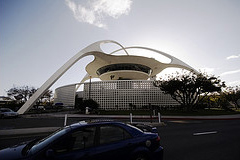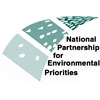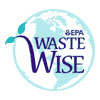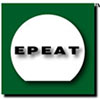Contact EPA Southern California
Pacific Southwest, Region 9
Serving: Arizona, California, Hawaii, Nevada, Pacific Islands, Tribal Nations
Partnerships
| Southern California Quick Finder | ||||
|---|---|---|---|---|
| Asbestos Brownfields Children's Health | Disaster Preparedness Grants Indoor Air | Leaking Fuel Tanks Mold | Ports RCRA ID Numbers Vehicle Imports | TMDLs Air Water Infrastructure Wildfires |

EPA invites your organization to earn national recognition and incentives, while benefiting your bottom line, by participating in any of the following free, voluntary partnerships. These programs assist public and private entities with greening many different types of activities, resulting in less pollution and often significantly reducing operating costs at the same time. EPA can provide step-by-step guidance on implementation as well as public recognition for environmental benefits.
National Partnership for Environmental Priorities (NPEP)

The NPEP program partners with public and private organizations to reduce the use or release of any of 31 Priority Chemicals (PCs). NPEP is part of EPA's National Waste Minimization Program and the Resource Conservation Challenge, a national effort to conserve natural resources and energy by managing materials more efficiently.
![]()
For more information, contact André Villaseñor (villasenor.andre@epa.gov), (213) 244-1813.
WasteWise

WasteWise is a free, voluntary, EPA program through which organizations eliminate costly municipal solid waste and select industrial wastes, benefiting their bottom line and the environment. WasteWise is a flexible program that allows partners to design their own waste reduction programs tailored to their needs.
For more information, contact André Villaseñor (villasenor.andre@epa.gov), (213) 244-1813.
GreenScapes

Landscaping is used everyday throughout the world to make our developed communities more aesthetically pleasing. While landscaping makes our yards and parks more visually enjoyable, it often has considerable economical and environmental costs. By making simple changes to these landscapes to make them "GreenScapes," one can save time, money and resources while still preventing pollution.
For more information, contact André Villaseñor (villasenor.andre@epa.gov), (213) 244-1813.
Electronic Product Environmental Assessment Tool (EPEAT)

EPEAT is a system to help purchasers in the public and private sectors evaluate, compare and select desktop computers, notebooks and monitors based on their environmental attributes. EPEAT also provides a clear and consistent set of performance criteria for the design of products, and provides an opportunity for manufacturers to secure market recognition for efforts to reduce the environmental impact of its products.
For more information, contact André Villaseñor (villasenor.andre@epa.gov), (213) 244-1813.
Environmental Management System (EMS)

Encourage business to adopt EMS - EMS is a continual cycle of planning, implementing, and reviewing activities to meet environmental regulations and improve a facility's overall performance. This includes non-regulated environmental impacts like energy use, carbon dioxide emissions, and purchase and use of products that have less impact on the environment. With an EMS, a facility's environmental impacts become the responsibility of all employees and managers.
Industrial Materials Recycling Partnerships

These EPA programs promote the reuse of industrial waste materials:
Coal Combustion Products Partnership (C2P2)
Coal combustion products (CCP's) are the byproducts generated from burning coal in coal-fired power plants such as fly ash and bottom ash. These byproducts can be reused as construction materials in highways and buildings. As an example, the Los Angeles County Community College District received a C2P2 award from EPA for using CCP's in a $2.2 billion campus-wide modernization project.
For more information, contact Angeles Herrera (herrera.angeles@epamail.epa.gov).
Construction and Demolition Debris – Recycling the debris generated during the construction, renovation, and demolition of buildings, roads, and bridges saves valuable landfill space and can reduce the cost of new buildings.
Contact: Timonie Hood (hood.timonie@epa.gov)

